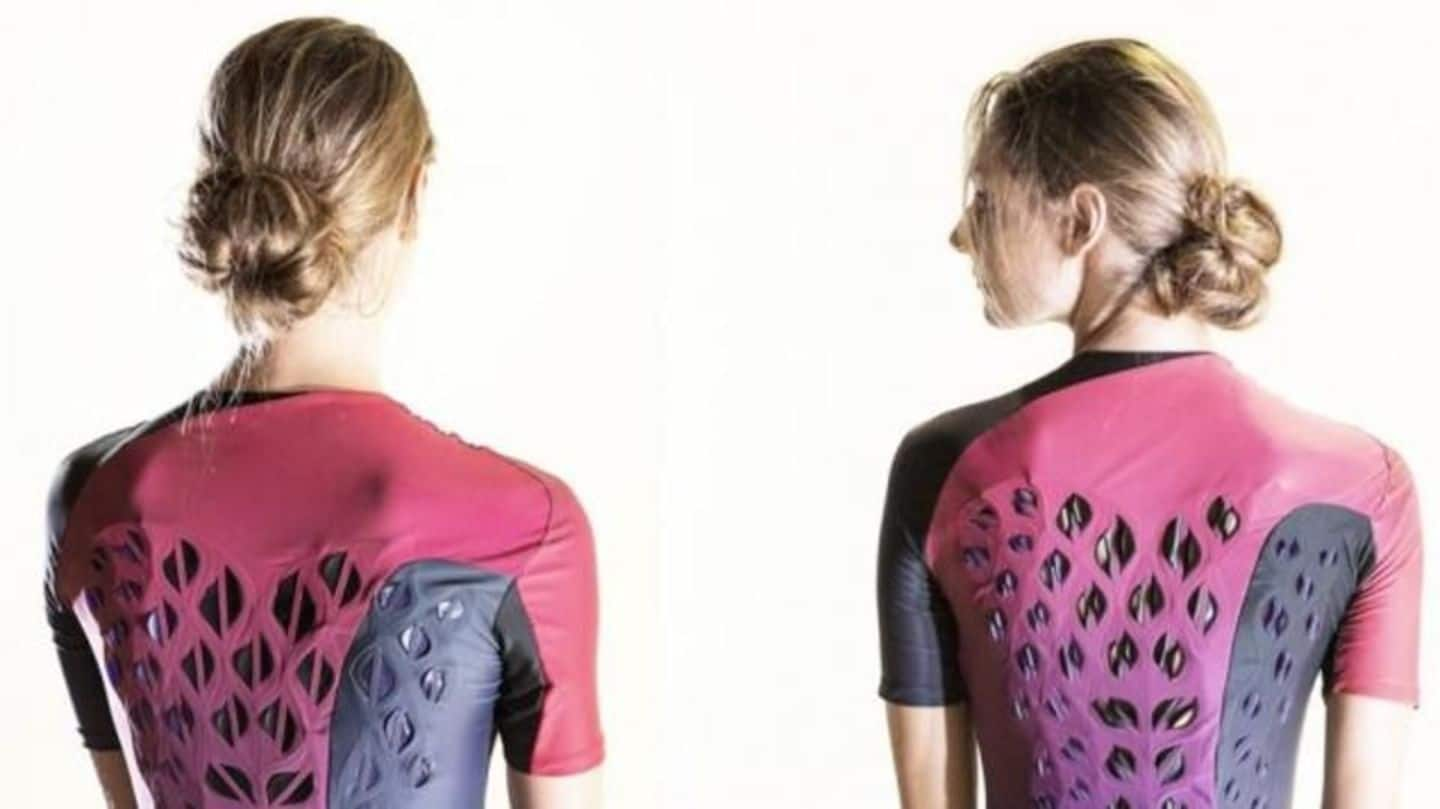
MIT's breathable workout suit is here. Say goodbye to sweat!
What's the story
If sweating and soggy clothes are stopping you from exercising, then researchers at Massachusetts Institute of Technology have good news for you!
They designed a breathable, no-sweat workout suit that can keep your body "cool and dry" in the gym.
It has ventilating flaps that open/close according to the body's heat and sweat.
So, how does the wearable "air conditioner" work? Let's know!
Harmless Microbes
Workout suit powered by harmless microbes
Harmless microbes in the ventilating flaps power the suit; the flaps, ranging from thumbnail to finger-sized, shrink and expand with changes in humidity.
The microbes act like tiny sensors and actuators, driving the flaps to open/close when the body works up sweat or cools off.
In a paper published in Science Advances, the researchers described a running-shoe with similar flaps to wick away moisture.
Trials
Effectively removed sweat and lowered skin temperature
In trials to test the suit, participants worked out on exercise bicycles and treadmills while researchers monitored their body temperature and humidity with the help of small sensors on their backs.
After five minutes, the ventilating flaps started opening, just when the participants reported feeling warm and sweaty.
The flaps effectively removed sweat and lowered skin temperature compared to suits with non-functional flaps.
Why?
Why use live microbial cells in responsive fabrics?
Moisture-sensitive microbe cells do not require additional elements to sense and respond to humidity.
With the availability of latest genetic engineering tools, these cells can be prepared quickly in vast quantities to express various functionalities in addition to moisture response.
To demonstrate multiple functionalities, researchers engineered the cells to not only open/close flaps but also light up in response to humidity.
Multiple Functionalities
What's next? Nice-smelling, no-sweat exercise suit
The paper's lead author and former scientist in MIT's Media Lab and Department of Chemical Engineering, Wen Wang, said they used fluorescence as an example of multiple functionalities that is helpful if people are running in the dark.
Wang said they can combine odor-releasing functionalities in the future.
He added, "So maybe after going to the gym, the shirt can release a nice-smelling odor."
Quote
The power of biology
Associate Professor in MIT's Department of Mechanical Engineering and the study's co-author, Xuanhe Zhao, stated: "This work is an example of harnessing the power of biology to design new materials and devices and achieve new functions."
Temporary
The timeline is brewing!
The timeline is brewing!